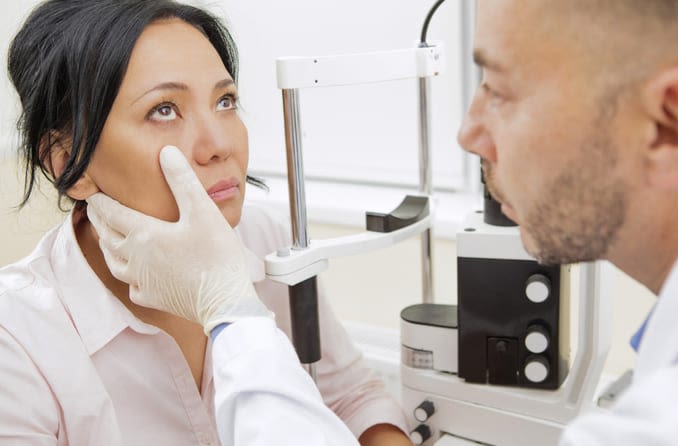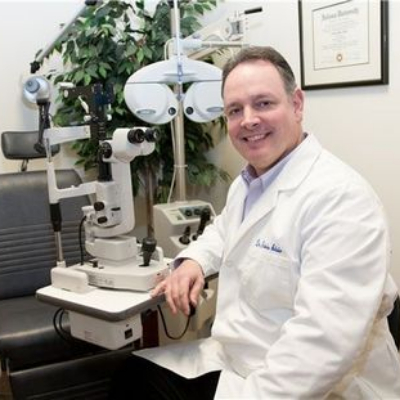Exploring the most up to date Technological Developments in Optometry and What They Mean for Optometrists
From the accuracy of Optical Coherence Tomography to the nuanced insights offered by AI-driven analysis tools, these developments are establishing brand-new criteria in individual assessment and treatment. As these innovations penetrate the practice, optometrists are faced with the obstacle of accepting these devices to boost patient results.
Technologies in Diagnostic Equipment
Progressing the area of optometry, developments in analysis devices have actually transformed the means eye care professionals analyze and identify aesthetic problems and eye problems. The previous decade has actually witnessed significant technological developments, making it possible for even more accurate and extensive assessments.
An additional secret innovation is the introduction of advanced corneal topography systems, which map the surface area curvature of the cornea with accuracy. These devices are specifically beneficial for suitable call lenses and diagnosing corneal problems. Furthermore, digital retinal imaging has actually transformed standard ophthalmoscopy, providing thorough, breathtaking sights of the retina that facilitate detailed visual evaluations.
The advancement of wavefront aberrometry has actually additionally been essential, enabling the analysis of refractive mistakes with unmatched precision (Opticore Optometry). This innovation aids in customizing restorative lenses and enhancing medical outcomes for refractive surgical procedures. Jointly, these analysis improvements encourage optometrists to deliver remarkable client treatment, ensuring early treatment and tailored treatment approaches, inevitably boosting visual health and wellness results
AI in Individual Management
Building on the foundation of advanced analysis devices, the consolidation of synthetic knowledge (AI) in patient monitoring represents a transformative leap for optometry. AI systems are progressively utilized to improve efficiency, accuracy, and personalization in patient treatment.
Additionally, AI-driven platforms facilitate structured person interactions and management procedures. Automated organizing, digital appointments, and customized follow-up strategies not just enhance individual fulfillment but also maximize time management for specialists. These systems can triage patients based upon the necessity of their problems, making sure that those in essential demand get prompt focus.
Additionally, AI boosts decision-making by giving eye doctors with evidence-based suggestions and treatment pathways. By incorporating data from digital health documents, AI devices use understandings that educate professional choices, lowering the threat of mistakes and improving patient outcomes. As AI remains to evolve, its duty in person monitoring will likely increase, reshaping the landscape of optometric care.
Breakthroughs in Retinal Imaging
In the world of optometry, retinal imaging has actually seen exceptional technical improvements that are improving diagnostic capacities and person care. Developments such as Optical Comprehensibility Tomography (OCT) and fundus digital photography have changed just how optometrists assess the retina and picture. OCT, specifically, gives high-resolution, cross-sectional photos of the retina, enabling the detailed exam of its layers. This ability is vital for early discovery and monitoring of conditions like glaucoma, diabetic person retinopathy, and age-related macular degeneration.
Improved imaging modalities like OCT angiography are further refining diagnostic precision. Optometrist Chino. Such developments facilitate the recognition of minute retinal adjustments that can represent illness progression.
Furthermore, developments in synthetic knowledge are augmenting retinal imaging by enabling automated evaluation of big datasets. These systems aid eye doctors in identifying patterns a sign of pathology, thereby enhancing analysis precision and performance. Jointly, these advancements are changing retinal imaging into a cornerstone of modern-day eye care, enhancing end results and broadening restorative possibilities.
Teleoptometry's Expanding Role
Teleoptometry is significantly becoming a vital element of eye care, driven by advancements in digital communication and analysis devices. This is specifically valuable in underserved and rural locations where accessibility to specialized eye care is typically restricted.
The combination of fabricated intelligence (AI) further boosts teleoptometry, enabling the evaluation of aesthetic data and aiding in the detection of ocular problems such as glaucoma and diabetic person retinopathy. AI-powered algorithms can swiftly analyze complicated imaging data, offering eye doctors with important understandings that strengthen clinical decision-making.
Furthermore, teleoptometry sustains connection of treatment via smooth integration with digital health documents (EHRs), enabling optometrists to keep extensive person histories. When seeking advice from with different experts., this makes sure that patients obtain customized and constant care even.
In spite of these advantages, challenges continue to be, including ensuring information safety and taking care of person assumptions. Teleoptometry stands for a considerable stride in the direction of even more available, effective, and patient-centered eye care. As modern technology evolves, its function is poised to expand additionally.

Future Trends in Eye Treatment
A myriad of ingenious patterns is established to improve the future of eye care, driven by technical improvements and the developing requirements of clients. One substantial trend is the integration of expert system (AI) in diagnostics, which guarantees to improve the accuracy and effectiveness of eye assessments. AI formulas can analyze substantial quantities of information from retinal photos, possibly detecting conditions like diabetic person retinopathy and glaucoma earlier than traditional techniques.
Moreover, tailored medication is obtaining traction in optometry, with genetic testing informing customized treatment strategies. This method intends to optimize patient end results by tailoring treatments to specific hereditary accounts. Wearable modern technology, such as wise contact lenses, is additionally on the horizon, using real-time monitoring of intraocular stress or sugar degrees, therefore providing constant insights into eye and systemic wellness.
The adoption of increased truth (AR) and online fact (VIRTUAL REALITY) in training and individual education and learning is an additional emerging pattern. These innovations offer immersive experiences that can enhance understanding and skills both for clients and eye doctors. As these trends progress, eye doctors need to remain abreast of my company technological innovations to provide sophisticated treatment, guaranteeing enhanced patient outcomes and complete satisfaction in the dynamic landscape Home Page of eye treatment.
Final Thought

Collectively, these analysis improvements equip optometrists to supply superior person care, making certain very early treatment and tailored therapy methods, inevitably improving aesthetic wellness end results.

As these technologies proceed to evolve, optometrists should adapt and integrate them into technique, inevitably optimizing workflow click to read more efficiency and boosting the criterion of eye treatment provided to individuals.